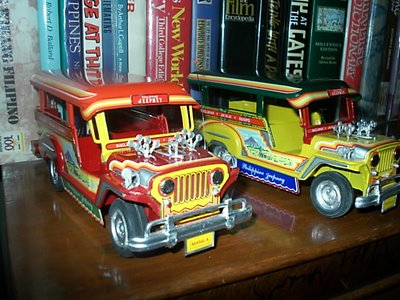Napakarami ng ginawa ng Pinoy ang maipagmamalaki na natin sa buong mundo, at isa na daw dito ay ang pag-akyat ng mga Pilipino sa ituktok ng Bundok Everest.
Masyadong publisidad ang ginawa ng Channel 2 at Channel 7 para sa ekspedisyong ito ng mga Pinoy sa Bundok Everest. Halos araw-araw, tuwing sasapit ang balita, naka-headline ang pag-akyat na ito nina Oracion at Garduche sa Everest na para bang ito na ang pinakamahalagang balita sa buong Pilipinas. Napakalaking salapi ang ginugol dito, at ginawang negosyo ng dalawang network.
Bukod dito, hanggang ngayon ay pinagtatalunan pa rin: sino ba talaga ang nauna sa tuktok, si Abenojar o si Oracion? Kaya tuloy naisip ko, ano ba talaga ang "big deal" sa pag-akyat na ito ng mga Pinoy sa pinakamataas na bundok? Talaga bang "cool" tayong mga Pinoy dahil nakaakyat na ang kababayan natin sa Everest? O para lang tayong uhaw sa pansin at di natin inisip na ang pag-akyat na ito ay layaw lamang?
Ang isang Pilipinong nagnanais umakyat sa Everest ay dapat na may baong hindi kukulangin sa labing limang libong dolyar (15,000 dollars) o kulang kulang isang milyong piso. Ito ay sa dahilang maraming gastusin, tulad ng hotel, pamasahe, mga kagamitan tulad ng tents, oxygen, pag-arkila sa mga sherpa, sa mga kambing(yak), gamot, pagkain, at marami pang ibang gastusin.
Palagay ko ay sinagot ng dalawang network ang mga gastusing ito nina Oracion, Abenojar, at Garduche, dahil sa tingin ko ay di naman mayayaman ang tatlong ito. Tapos ipalalabas sa telebisyon, at bibigyan ng publisidad para makakuha ng maraming advertisers. E di malaking negosyo!
Hindi naman sa minamaliit ko ang ekspedisyon ng mga Pinoy sa Everest, kaya lang ay palagay ko ay hindi na ito "big deal" sa ngayon lalo na at una pa itong naakyat ng tao noon pang 1953. Sa huling pigura, taong 2006, kulang kulang isang libo na ang mga taong nakaakyat dito. Ala eh napakarami na pala! Kung susumahin, kulelat na nga tayo sa larangang ito!
Kung gayon pala ay para lang tayong nagdiriwang na tayo ay sikat pero sa totoo lang, ang ibang bansa ay napapangiti at nagsasabing, e ngayon nga lang kayo nakarating diyan e, kami pabalik-balik na diyan!
Nakakainis lang kasi na mas maraming bagay tayong dapat na pagtuunan ng pansin kaysa pag-akyat sa bundok na ikinasawi na ng maraming tao. E ano kung maakyat ang Everest, ikaw ba ay sikat dahil dito sa kabila ng maraming dugong ibinuwis sa pag-akyat nito? Sa estadistika ay mayroon ng kulang kulang na dalawang daang katao ang namatay sa pag-akyat ng Everest. Ito ay isang kabalintunaan.
Nakakayamot at nakalulungkot isipin na ang tao ay nagbubuwis ng buhay upang subukin lamang talunin(conquer) ang bundok. Ang buhay ng tao ay napakahalaga at di dapat isinusugal dahil lamang sa isang bagay na ikaw ay magiging kilala o sikat. Hindi sapat na magkaroon lamang ng karangalan ang ating bansa ay isusugal na natin ang ating buhay. Pasalamat sa Diyos at ang ating mga kababayang sina Oracion at iba pa ay nakaligtas sa disgrasya. Kung ito ay nauwi sa sakuna, tulad na lang ng sampung nagbuwis ng buhay sa Everest sa taong ito, ang mga Pilipino ay walang karapatang magmalaki na tayo'y sumubok umakyat sa Everest.
Kaya labis kong ikinalulungkot na mga Pilipina naman daw ang susunod na aakyat sa Everest. Mas maganda pa siguro kung sila'y magtuon na lang ng pansin sa pagsagip sa ating Bundok Apo, na sa balita ko ngayon ay napakarumi na at maraming basura dahil sa talamak na pag-pipiknik dito.
Sey mo dyan?
 Sa presyong limangdaang piso ay nabili ko ang kulay dilaw na Jeepning ito...maganda at bago pa..may rutang Baclaran-Quiapo. Ito ay isang true-to scale die-cast model.
Sa presyong limangdaang piso ay nabili ko ang kulay dilaw na Jeepning ito...maganda at bago pa..may rutang Baclaran-Quiapo. Ito ay isang true-to scale die-cast model. Ang kulay pulang Jeepney na may rutang Baclaran-Quiapo. Kulang na lang ay ang mga pasahero at tsuper. Saan kaya nakakabili ng mga miniatures na mga Pilipino. Plano kong dagdagn ito ng disenyo tulad ng mga maliliit na piguring tao sa bubong(dahil ang mga probinsyano'y sumasakay kahit sa bubong ng Jeepney!), at ilang mga bagahe.
Ang kulay pulang Jeepney na may rutang Baclaran-Quiapo. Kulang na lang ay ang mga pasahero at tsuper. Saan kaya nakakabili ng mga miniatures na mga Pilipino. Plano kong dagdagn ito ng disenyo tulad ng mga maliliit na piguring tao sa bubong(dahil ang mga probinsyano'y sumasakay kahit sa bubong ng Jeepney!), at ilang mga bagahe. Ang gara nilang dalawa di ba? Bagay na bagay ipareha sa koleksyon ko ng mga aklat at komiks....Ang Jeepney..Bow!
Ang gara nilang dalawa di ba? Bagay na bagay ipareha sa koleksyon ko ng mga aklat at komiks....Ang Jeepney..Bow!